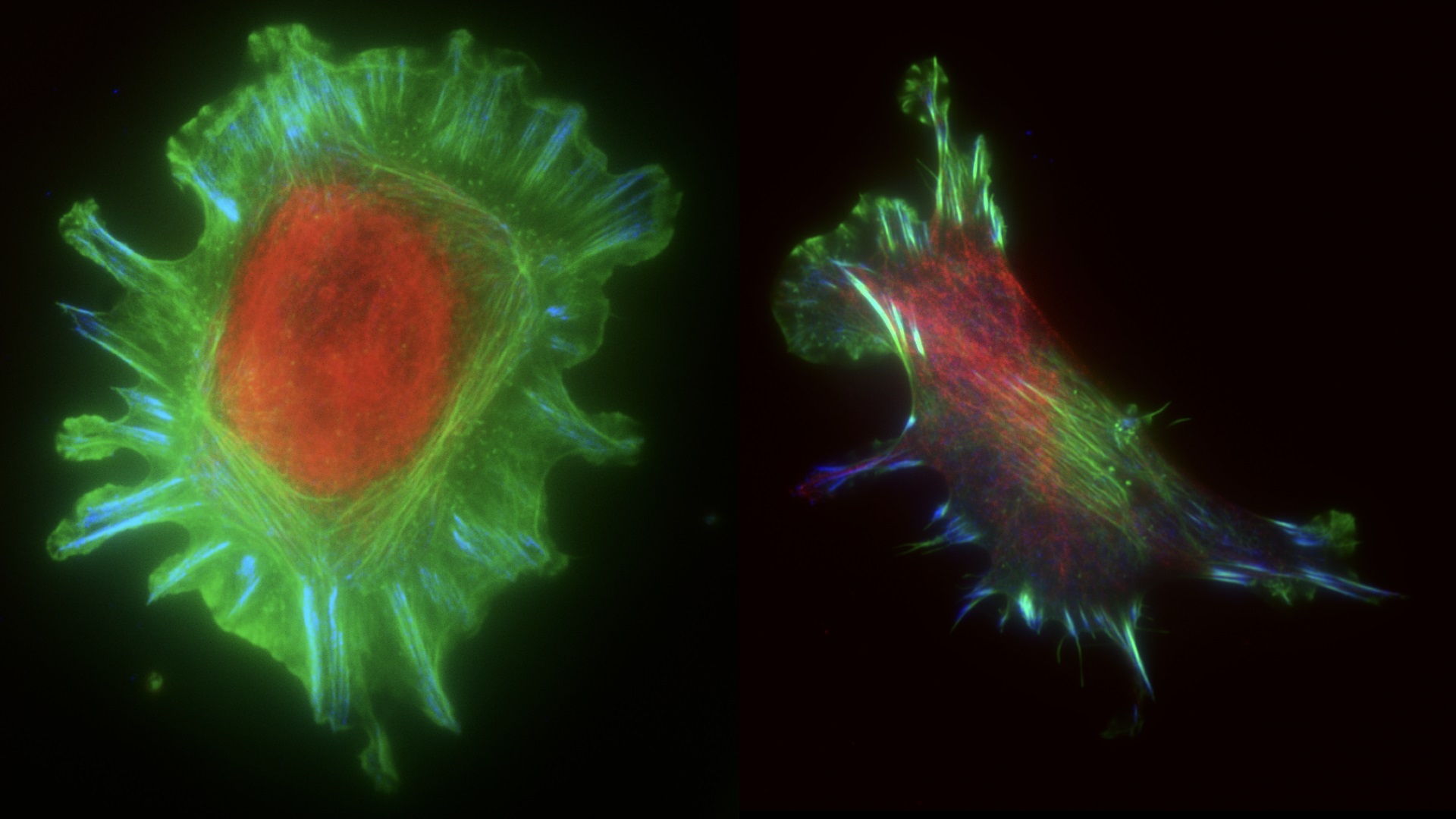
The goal of the Bakal laboratory is to understand how cancer cells determine their shape. The ability of cancer cells to adopt different shapes is not only absolutely essential for metastasis; but is also important to other key aspects of cancer progression such as uncontrolled proliferation, drug resistance, and the inflammatory and immune responses.
By understanding the systems that determine cell shape, the Bakal laboratory hopes to identify new ways to prevent cancer cells from changing this and open up new therapeutic avenues.
To study cancer cell shape determination the Bakal laboratory uses a combination of cutting-edge microscopy, functional genomic, mathematical, and bioengineering methods. In particular Professor Bakal has pioneered the use of artificial intelligence and new statistical tools to analyse big datasets generated by large-scale imaging.
Currently, work in the Bakal laboratory is focused around the following questions:
1) How do metastatic cancer cells sense, or “feel”, the different complex environments they encounter as they spread throughout the body (i.e. soft versus stiff tissues), and how to they change their shape in response to these different environments in order to metastasize?
Work in this area involves a diverse spectrum imaging approaches - from high-throughput 3D and 4D imaging, to super-resolution microscopy; as well as bioengineering methods to create materials and surfaces that mimic complex environments metastatic cells would encounter in the body.
2) How do biochemical signalling networks determine fate decisions at the single cell level?
The Bakal laboratory uses a number of technologies that monitor and quantify signalling events in single living cells, which are then used to inform statistical and mathematical models which aim to predict, given a set of starting conditions, what cancer cells will do in the future.
3) Can cell shape be used as a diagnostic tool?
By performing integrative analysis of different big datasets, the Bakal laboratory aims to develop technologies that will allow clinicians to diagnose cancer at the single cell level – simply by looking at cell shape.